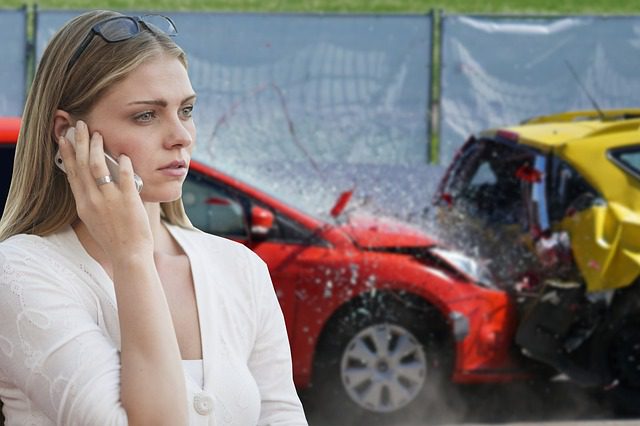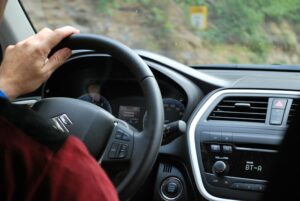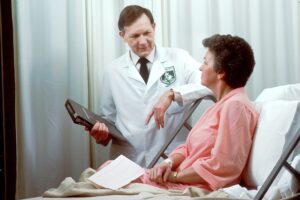Being involved in a car accident can be a terrifying and overwhelming experience. In the aftermath of a collision, one of the critical steps is to determine fault and seek compensation from the responsible party. However, when the at-fault driver remains unresponsive or unreachable, it can complicate the process of seeking the rightful compensation. In this article, we will explore the challenges of dealing with an unresponsive at-fault driver and the alternatives available for financial recovery.
Table of Contents
Understanding the Impact of an Unresponsive At-Fault Driver
When you find yourself in a car accident caused by another driver, communication with the at-fault party is crucial. This communication helps in the exchange of insurance information and gathering evidence for insurance claims. Unfortunately, some at-fault drivers may choose not to respond or evade contact, creating significant roadblocks in the claims process.
Reasons for Unresponsiveness
Several factors could contribute to the at-fault driver’s silence. They might be unaware of the accident due to the chaos of the collision or be hesitant to admit fault. In some cases, they might not have valid insurance or fear an increase in premiums if they report the accident. Additionally, personal reasons like avoiding confrontation or legal consequences might lead them to avoid communication.
Importance of Prompt Action
Dealing with an unresponsive at-fault driver requires swift action on your part. The longer you delay, the harder it becomes to collect evidence and witness statements. It is essential to act quickly and efficiently to ensure your rights are protected.
Steps to Take After an Accident with an Unresponsive At-Fault Driver
Contact Law Enforcement
After an accident, call the police and ensure that an official report is filed. This report will serve as crucial evidence when dealing with an unresponsive at-fault driver.
Gather Evidence
If it is safe to do so, collect evidence at the accident scene. Take photographs of the vehicles involved, the surrounding environment, and any visible damages. Also, gather contact information from any witnesses present.
Notify Your Insurance Company
Inform your insurance company about the accident immediately. Provide them with all relevant information and the police report.
Consult an Attorney
If the at-fault driver remains unresponsive, consider seeking legal counsel. An experienced personal injury attorney can guide you through the process and protect your interests.
Seeking Legal Action Against the Unresponsive At-Fault Driver
When the at-fault driver continues to evade responsibility, you may need to consider legal action. Filing a lawsuit against the negligent driver can compel them to respond and participate in the claims process.
Serving the Unresponsive Driver
Your attorney will attempt to serve the at-fault driver with a lawsuit. This involves delivering the legal papers to the driver and informing them of the pending lawsuit. If the driver cannot be located, alternative methods of service may be used, such as publication in a local newspaper.
Default Judgment
If the at-fault driver ignores the lawsuit and fails to respond within the specified timeframe, a default judgment may be obtained. This means that the court could rule in your favor due to the driver’s non-response. However, the driver may still have the opportunity to contest the judgment at a later date.
Dealing with Uninsured or Underinsured Drivers
In some cases, the at-fault driver may not have valid insurance or inadequate coverage to compensate for your damages. If you have uninsured/underinsured motorist coverage as part of your own insurance policy, you can explore this option for financial recovery. Your insurance provider may compensate you for the damages up to the policy limits.
Exploring Your Alternatives for Financial Recovery
When faced with an unresponsive at-fault driver, you may feel frustrated and unsure about your options for compensation. However, several alternatives are available for seeking financial recovery.
Uninsured/Underinsured Motorist Coverage
As mentioned earlier, this coverage can be beneficial when dealing with an at-fault driver without insurance or insufficient coverage.
MedPay Coverage
Medical Payments Coverage (MedPay) can help cover medical expenses regardless of fault. This can be especially useful if you have sustained injuries and require immediate medical attention.
Personal Injury Protection (PIP)
PIP coverage, similar to MedPay, covers medical expenses and other related costs like lost wages, regardless of fault.
Negotiating with Your Insurance Company
Your insurance company can act on your behalf and try to recover the damages from the at-fault driver’s insurance company.
Property Damage Claim
You can pursue a property damage claim against the at-fault driver to recover the costs of repairing or replacing your vehicle.
Subrogation
If your insurance company covers your damages, they may pursue subrogation against the at-fault driver to recover the costs they paid on your behalf.
Conclusion
Dealing with an unresponsive at-fault driver after a car accident can be challenging, but it is essential to take prompt action and explore your alternatives for financial recovery. Working with an experienced attorney and understanding your insurance coverage can significantly improve your chances of obtaining the compensation you deserve. Remember, silence may speak volumes, but with the right approach, you can still secure the financial recovery you need.
Featured Image by Tumisu from Pixabay
 Early in his journalism college years, Kerry Tucker had a revelation: there were not nearly enough law communicators. People’s difficulties in understanding the law, procedures, and how the justice system worked stemmed from the fact that no one took the patience to explain complicated matters to them. Therefore, he took upon him the task of helping people navigate legal matters more easily. He works with attorneys and other legal journalists and spends time doing research so that everyone – from a mother whose child got a bike injury to a company needing insurance counsel – to find the actionable answers they are looking for.
Early in his journalism college years, Kerry Tucker had a revelation: there were not nearly enough law communicators. People’s difficulties in understanding the law, procedures, and how the justice system worked stemmed from the fact that no one took the patience to explain complicated matters to them. Therefore, he took upon him the task of helping people navigate legal matters more easily. He works with attorneys and other legal journalists and spends time doing research so that everyone – from a mother whose child got a bike injury to a company needing insurance counsel – to find the actionable answers they are looking for.




